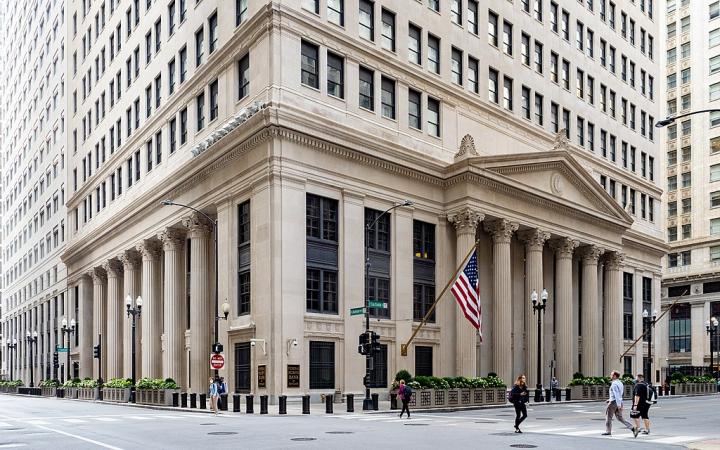
US asset managers are finding common ground on one point: the short end of the U.S. Treasury curve is where investors should be. The reasoning behind that stance, however, differs sharply.
Laura Cooper, head of macro credit at Nuveen, believes the Federal Reserve is unlikely to validate the aggressive path of rate cuts priced by markets. Guillermo Felices, global investment strategist at PGIM, reaches the same conclusion from the opposite angle. He sees a 40 percent chance that the Fed could in fact ‘out-dove’ expectations. Both agree that whichever way the Fed leans, the short end of the curve looks like the best bet for investors.
“Don’t expect the Fed to be more dovish than the market,” Cooper told Investment Officer. “Staying close to the front end of the curve is the cleanest way to capture income without unnecessary volatility.”
The case for short-duration Treasuries is especially resonating with European investors, Cooper said. Falling hedging costs have made U.S. fixed income more attractive on a currency-adjusted basis. With the euro having gained ground this year, the effective yield pick-up on dollar assets is larger than it was in 2023.
Only four cuts expected
Traders began the summer pricing as many as six to seven rate cuts through 2026. That has now come down closer to four. The dynamics this time differ from past cycles, said Cooper. Historically, Fed cuts were aimed at propping up weakening growth, a backdrop that often boosted demand for long-dated Treasuries. This cycle looks different.
“We are now in a higher inflation regime, and we are facing very different fiscal dynamics with elevated deficits,” she said. “That means there’s a greater risk premium that needs to be embedded at the long end. All of that lends itself to a structurally higher interest rate backdrop that we think is going to keep long-end yields elevated.”
Felices, by contrast, sees risks tilted the other way. PGIM’s base case assumes two cuts this year and two early next year, bringing the policy rate closer to 3 percent. But he argued that weakening growth could force the Fed to go further. “We have the U.S. economy slowing to around 1 or 1.5 percent growth,” he said. “That’s enough for the Fed to calculate that more easing is needed.”
For him, the key risk is not just more cuts, but the Fed cutting through the so-called neutral rate. PGIM estimates that rate at about 2.5 percent, the point where policy is neither stimulating nor restricting the economy. “The likelihood of going below the neutral rate is 40 percent,” Felices said. That would be a clear sign the Fed is out-doving the market.
Curve arithmetic
Both strategists stress that current yields at the short end of the curve offer enough compensation to avoid longer maturities. The two-year Treasury yields about 3.5 percent. One- and three-month bills pay around 4 percent. Those levels provide steady income without exposure to swings in long yields.
Cooper adds that large fiscal deficits make the long end especially vulnerable in the current cycle. Supply dynamics and investor fatigue at longer maturities mean that risks may outweigh rewards. “The short end gives you clean carry without the same vulnerability,” she said.
Other strategists echo the caution. Kathy Jones, chief fixed income strategist at Charles Schwab, says inflation around 3 percent leaves little scope for long yields to decline. If the Fed eases under those conditions, it risks fueling inflation concerns that keep yields elevated.
PNC’s Yung-Yu Ma adds that the driver of Fed policy will matter. “If cuts reflect weakening growth, long yields tend to go down. But if they come amid resilient growth or political pressure, long rates are more likely to rise,” he told Morningstar last week.
Pimco strikes a similar tone. Andrew Balls, the firm’s global fixed income chief investment officer, wrote in its cyclical outlook: “Our focus is on potential bull steepening via front-end rallies, rather than bear steepening from long-end selloffs.” Nonetheless, the fixed-income giant does keeps its overweight in the five-year area.
Corporate credit
Those investors who are not comfortable making a duration bet on U.S. Treasuries are shifting to corporate credit, according to Nuveen. Strong balance sheets as a safer bet than government debt weighed down by fiscal risk. The firm also sees value in securitized debt such as commercial and residential mortgage-backed securities, where fundamentals remain solid despite Fed easing.
Cooper called the “slow grind higher” in unemployment unusual, warning that a sharper deterioration could undercut the resilience priced into equities and credit. The opposite risk also looms: strong consumer spending and AI-driven investment could keep growth hot, forcing the Fed to temper cuts and leaving long yields under pressure.